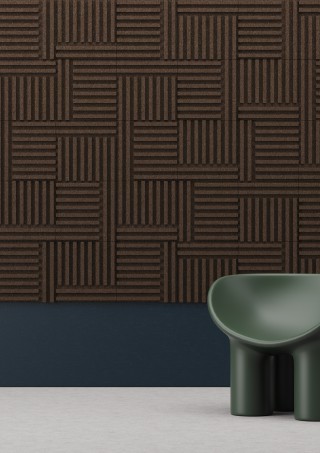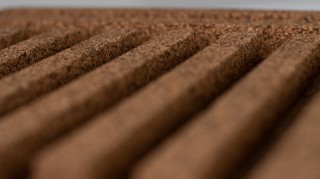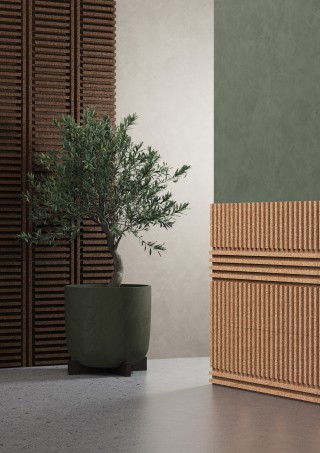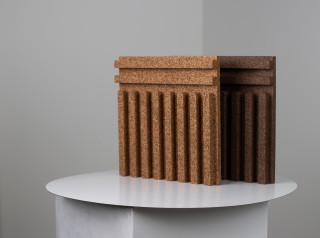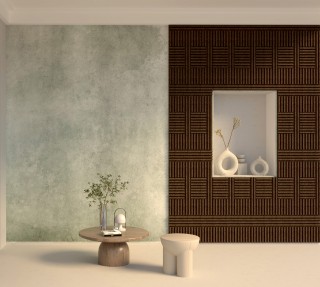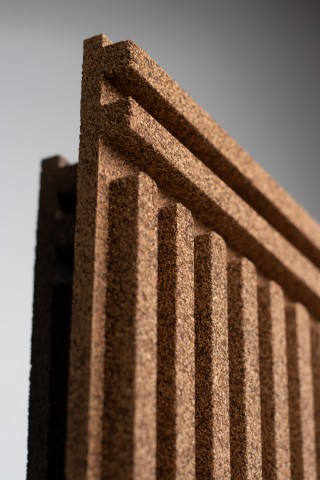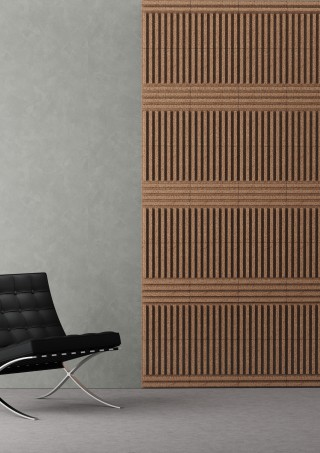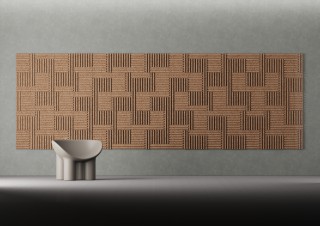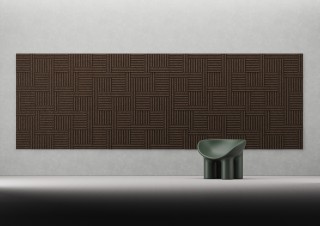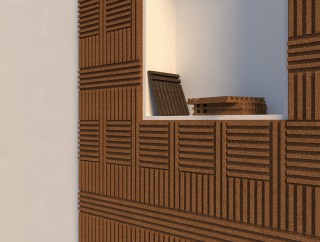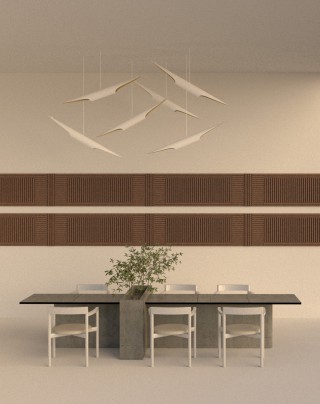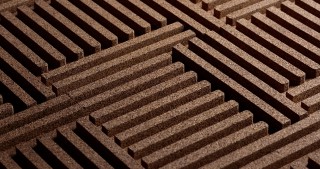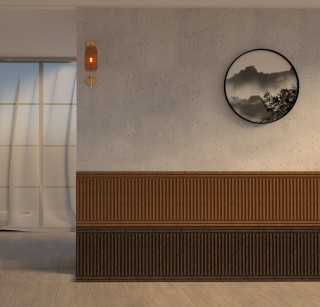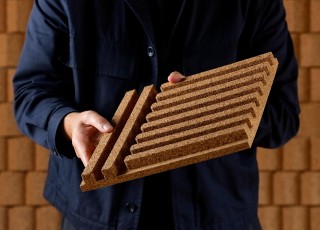SILLON
GREENMOOD
The whole idea behind the Sillon concept was to find a way to create a cork module, a cork tile, that would appear larger than it really is, where the seams between each square module would pretty much disappear, allowing the creation of a wall with expanding patterns and multiple or ideally endless patterns. To create an original design capable of generating different designs with only one unique tile and one mold, since these cork panels are molded.
“Sillon" means "groove" in English, just like the small grooves found on LPs or the furrows in a freshly plowed field. The concept was born while passing by an old Art Deco villa built with slim yellow bricks used horizontally and vertically to define the façade and its decorative element, with deep joints between the bricks.
So the aim was to design these single cork tile used to create a wall where the patterns would appear continuous, and where it would be challenging to distinguish the gaps between the different modules. These gaps being cleverly hidden between the lines and shadows created by the grooves.
The design also aims to allow the creation of somewhat endless patterns and expending patterns. The patterns created by the modules connected in different directions allow the patterns to grow and expand beyond their original panels. The patterns then become dynamic and evolving as the lines of the patterns connect in different ways and either extend themselves or are stopped by a line going in the other direction. Because each module is composed of both vertical and horizontal lines, in some cases when placed next to another module used in a different direction, only some of the lines will connect, creating new, more complex, expanding patterns in a kind of overlapping process. In this way, a single molded cork tile can be used to create a wall with either fairly simple designs or more complex ones.
With the introduction of 3D cork tiles in the Greenmood collection, we continue to push the biophilic logic that is the brand's hallmark. In this case, we are not playing with naturally preserved plants, but with the bark of the tree from which cork comes. Like the mosses and lichens used by Greenmood, cork has good natural acoustic properties and is also a very good thermal insulator.
The sustainability aspect of cork is also a key element of the project. It is a completely renewable material that can be recycled. It comes from the bark of the cork oak tree, which is manually harvested every nine years, as it needs time to regenerate. Its production does not cause or contribute to deforestation.
The natural aspect of these cork tiles is further enhanced by their unique custom texture, which gives them real presence and depth. A special blend of cork has been created to give the tiles their unique texture and color combination, further enhancing their natural qualities. The idea was also to bring a certain irregularity and humanity to each piece and in the end to each wall.
These three-dimensional cork tiles are tools for architects to define their own vision and own unique walls.

